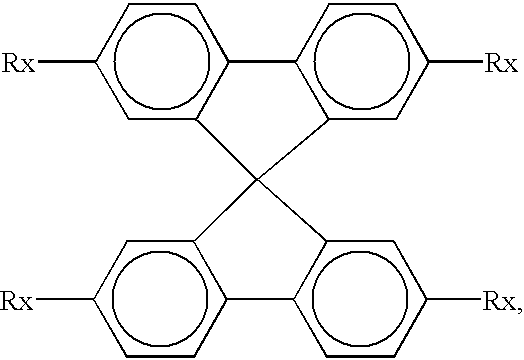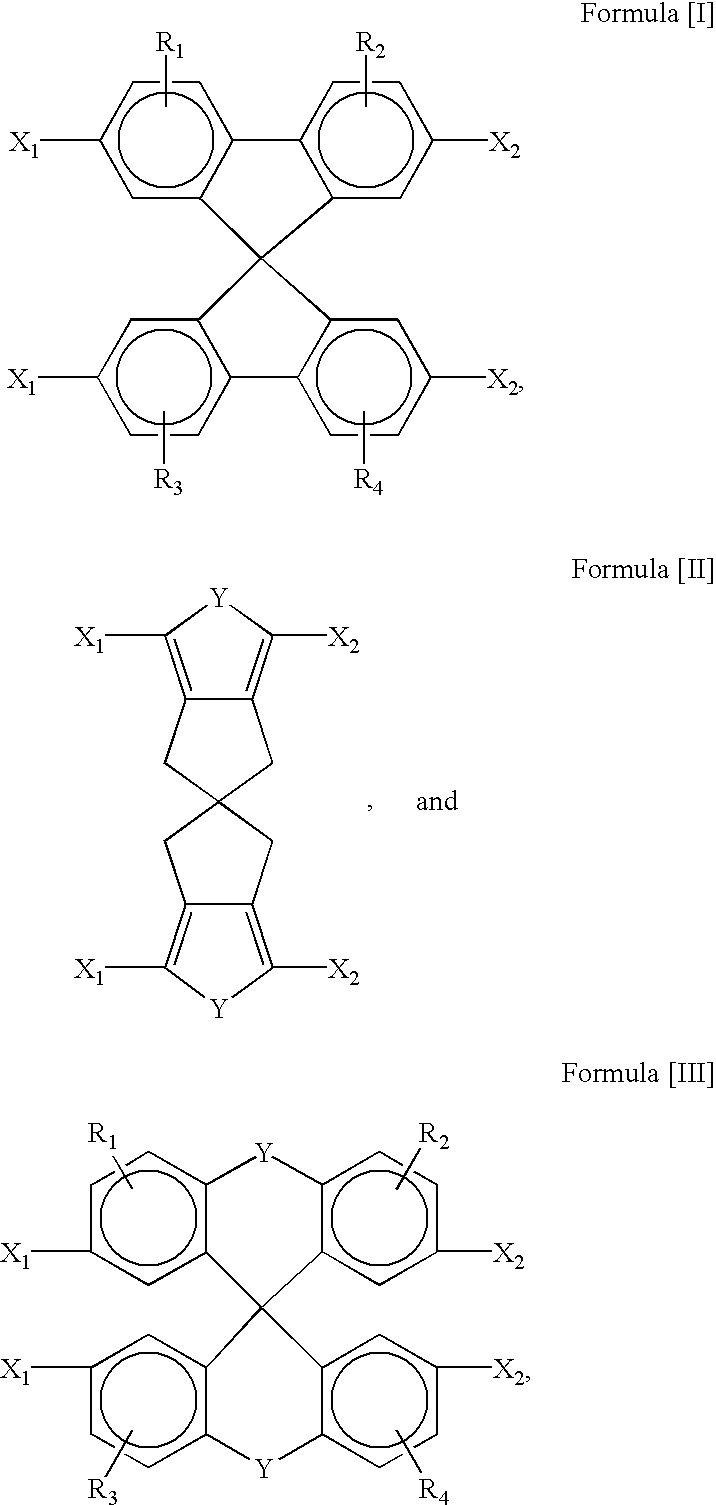Organic luminescence device
a luminescence device and organic technology, applied in the direction of discharge tube luminescence screen, other domestic articles, natural mineral layered products, etc., can solve the problems of insufficient durability of the luminescence device, liable to be deteriorated, liable to be changed in the properties of the device,
- Summary
- Abstract
- Description
- Claims
- Application Information
AI Technical Summary
Benefits of technology
Problems solved by technology
Method used
Image
Examples
examples 2-20
[0072] Organic luminescence devices were prepared and evaluated in the same manner as in Example 1 except for replacing the spiro compound of Compound No. I-4 with Compounds Nos. I-6, I-7, I-10, I-13, I-21, I-25, II-1, II-5, II-7, II-10, II-12, II-15, II-23, II-28, II-33, III-4, III-7, III-9 and III-11, respectively, listed in Tables 1 to 3 set forth above.
[0073] The results are inclusively shown in Table 4 set forth hereinafter.
example 21
[0075] The procedure of Example 1 was repeated up to the formation of the hole-transporting layer 5.
[0076] Then, the hole-transporting layer 5 was further coated by vacuum deposition of a mixture of spiro compound (Compound No. I-1) and aluminum tris(quinolinol) in a weight ratio of 1:20 to form a 60 nm-thick electron-transporting layer 6 under a vacuum of 1.0.times.10.sup.-4 Pa and at a film thickness growth rate of 0.2-0.3 nm / sec.
[0077] Then, the electron-transporting layer was further coated by vacuum deposition of Al--Li alloy (Li 25 content: 1 atom. %) to form a 150 nm-thick metal film 4 under a vacuum of 1.0.times.10.sup.-4 Pa and at a film thickness growth rate of 1.0-1.2 nm / sec, thereby forming an organic luminescence device of a structure shown in FIG. 2.
[0078] The thus-obtained device was then supplied with a DC voltage of 8 volts between the ITO electrode 2 as an anode and the Al--Li alloy electrode as a cathods, whereby a current flowed at a density of 8.7 mA / cm.sup.2 an...
examples 22-32
[0079] Organic luminescence devices were prepared and evaluated in the same manner as in Example 21 except for replacing the spiro compound of Compound No. I-1 with Compounds Nos. I-8, I-11, I-16, I-23, II-2, II-9, II-16, II-20, III-2, III-6 and III-7, respectively, listed in Tables 1 to 3 set forth above.
[0080] The results are inclusively shown in Table 5 set forth hereinafter.
PUM
| Property | Measurement | Unit |
|---|---|---|
| thickness | aaaaa | aaaaa |
| thickness | aaaaa | aaaaa |
| thickness | aaaaa | aaaaa |
Abstract
Description
Claims
Application Information
 Login to View More
Login to View More - R&D
- Intellectual Property
- Life Sciences
- Materials
- Tech Scout
- Unparalleled Data Quality
- Higher Quality Content
- 60% Fewer Hallucinations
Browse by: Latest US Patents, China's latest patents, Technical Efficacy Thesaurus, Application Domain, Technology Topic, Popular Technical Reports.
© 2025 PatSnap. All rights reserved.Legal|Privacy policy|Modern Slavery Act Transparency Statement|Sitemap|About US| Contact US: help@patsnap.com



